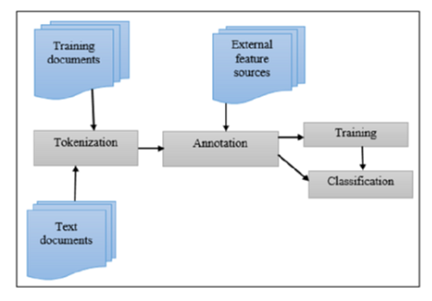


Indian Journal of Science and Technology
DOI: 10.17485/IJST/v14i39.1163
Year: 2021, Volume: 14, Issue: 39, Pages: 2998-3006
Original Article
Birhanu Gardie1*, Smegnew Asemie1, Kassahun Azezew1
1School of Computing and informatics, Mizan-Tepi University, Ethiopia
*Corresponding Author
Email: [email protected]
[email protected]
[email protected]
Received Date:24 June 2021, Accepted Date:17 October 2021, Published Date:27 November 2021
Objectives: This study aims about the development of Anyuak language named entity recognition of its first kind. NER is a fundamental sub task in natural language processing and the high accuracy competence in NER system marks the effectiveness of the downstream tasks. Anyuak language named entity recognition concern is addressed by using a long short-term memory model to categorize tokens into predefined classes. Methods: A long short-term memory is used to model the NER for Anyuak language to detect and classify words into five predefined classes: Person, Time, Organization, Location, and Others (non-named entity words). Because of feature selection plays a vital role in long short-term memory framework, the experiment in this work were conducted to discover most suitable features for Anyuak NER tagging task. Findings: When we evaluated the experiment in cross-validation, we achieved a promising result of precision, recall, and F1-measure values of 98%, 90, and 94% respectively. From the experimental result, it is possible to determine that tag context, word features, part of speech tags, suffixes and prefixes are significant features in named entity recognition and classification for Anyuak language. Novelty: Finally we have contributed a new architecture for Anyuak NER which uses automatically features for Anyuak named entity recognition which are not dependent on other NLP tasks. We proved that deep learning models can be extended, trained and can work for Anuak languages.
Keywords: Named entity recognition in Anyuak; Recurrent neural network; long shortterm memory; Natural language processing; and deep learning
© 2021 Gardie et al. This is an open-access article distributed under the terms of the Creative Commons Attribution License, which permits unrestricted use, distribution, and reproduction in any medium, provided the original author and source are credited. Published By Indian Society for Education and Environment (iSee)
Subscribe now for latest articles and news.